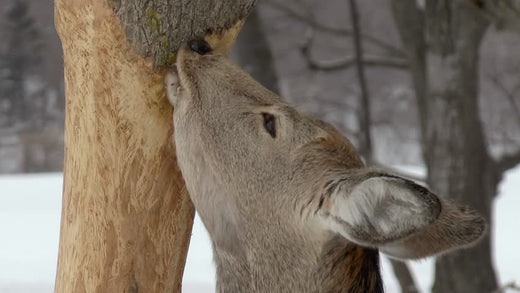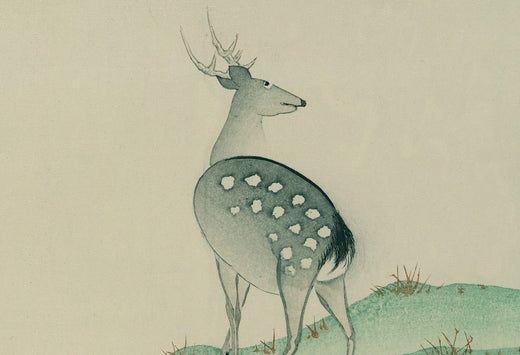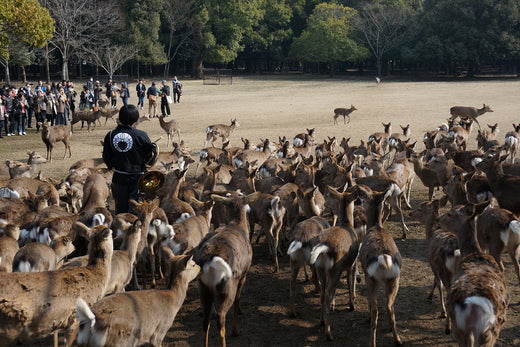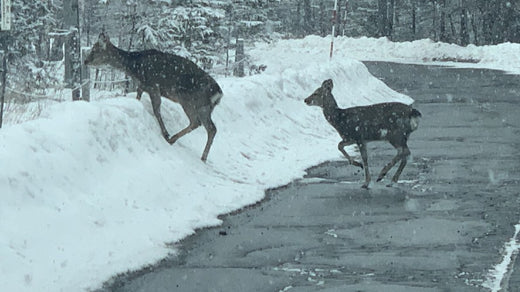Deer's favorite food is various plants. They eat a wide variety of plants, not only grass and leaves, but also bark when food is scarce.
It is already widely known that it is a serious problem because it eats all the plants in the area and causes damage to the extent that it can change the appearance of forests in a short period of time. In this article, we'll take a closer look at that reality.
Where are the most dramatic changes?
Veteran climbers and other people who have been watching the mountain for a long time often say that the mountain has become particularly rough in recent years. There are many dead trees standing upright, and many places where the ground is exposed.
In particular, the changes in the forest areas, mainly in the low mountains, are remarkable, and it is said that there are many cases where trees and plants have died and the soil has collapsed in places that were once lush with virgin forests. And the major cause is the damage caused by deer.
According to the Forestry Agency, in 2015, about 8,000 hectares (about 1,700 times the size of Tokyo Dome) were damaged by wild animals such as deer and bears nationwide. About 80% of the damage is caused by feeding and peeling off of the snails.

Area of forest damage caused by major wild birds and animals (FY2015) *Source: Forestry Agency data
Characteristics of the affected area
Do you know the word Deer Line? A deer line is a line on the vegetation caused by deer feeding. Along the height the deer's mouth can reach, it exposes areas where leaves have been removed or skinned.
The higher the deer density, the more deer lines will appear. For example, in Nara Park, which is famous for deer, there are almost no branches or leaves below 2m, and this deer line is widely known as a unique landscape.
Deer lines are often seen in forests where only plants that deer don't like remain, or where the damage is so severe that the ground is almost bare. And deer feces can be found on the bare ground.
Such bare lands tend to leave painful traces of rainwater and are prone to heavy sediment runoff. In addition, there is a lot of mud in the mountain stream, which has a big impact on the ecosystem.
Deer feeding damage also causes serious damage to the forestry industry. Although the degree of damage is lower than that of natural forests, which are rich in deer's favorite food, planted cedar and cypress seedlings are eaten, and trees that have become more valuable over time are damaged by peeling. I'm here.
The forestry business is so unprofitable that it is said that "if you plant, you will lose money". Under such circumstances, even if the trees are planted, if the soft seedlings are eaten quickly, the motivation of forest owners to manage their forests will be diminished.
There are methods such as deer fences and tree shelters to protect the seedlings. The risk of deer feeding damage, which can be eaten even after planting, is fatal to the forestry industry.
Why deer have increased
One of the reasons for this increase in damage is the increase in the deer population. As of the end of 2013, the number of deer population exceeded 3 million, showing an increase of almost 10 times the number in 1989 ( citing data from the Forestry Agency ). .
 Then, why did the number of deer increase? These include global warming, the extinction of natural enemies, and a decrease in the number of hunters.
Then, why did the number of deer increase? These include global warming, the extinction of natural enemies, and a decrease in the number of hunters.
effects of global warming
The first factor is that the amount of snowfall has decreased due to global warming, and the number of individuals that can survive the winter has increased. Less snow cover means less snow cover on the ground, increasing the period and area in which plants can be fed.
As a result, deer (especially fawns) are less likely to die of starvation in winter. Deer can become pregnant as early as the fall of their first year after birth, and they get pregnant almost every year, so if the conditions are favorable, the population will increase rapidly.
Comparing the distribution of deer in 1978 with that in 2003, we know that the distribution expanded by about 70% as a whole, mainly in western Japan where there is little snow. 
Distribution and expansion forecast of sika deer *Source: Ministry of the Environment data
extinction of natural enemies
Japanese wolves used to live in Japan as natural predators of deer, but they became extinct in the Meiji era. The extinction of Japanese wolves, their natural predators, is also said to be one of the reasons for the increase in sika deer.
Therefore, one idea under consideration to reduce the number of deer is to introduce wolves from abroad. However, the introduction of wolves from other countries easily has various impacts on the ecosystem.
In addition, since there are cases of attacks on livestock, there are social problems such as concerns about people's safety. As a result of releasing predatory alien species into the wild in the past, damage to various ecosystems and crops has been confirmed. For these reasons, it is necessary to carefully consider the introduction of wolves that are no longer inhabiting the area, and it is effective to proceed with the capture of wolves by hand.
decline in hunters
Deer population control has been achieved through hunter hunting and harmful capture. However, due to the aging population, the number of hunters is decreasing nationwide. The number of people granted licenses by prefectures has fallen to less than half of what it was in the 1970s.
Due to the lack of young people, it is thought that the number of hunters will decrease sharply when the active hunters retire in the near future. According to the Forestry Agency , even if the current catch rate is maintained, the deer population is expected to increase 1.5 times to 4.53 million in 10 years (2023).
About measures
In order to prevent deer damage, it is essential to use various control techniques such as installation of fences and repellents, as well as population control. It is mainly hunters who perform population management, but hunting using guns cannot be completely relied on considering time, cost, safety, efficiency, etc.
Against the background of the declining number of hunters, it is now necessary for farmers and foresters themselves to catch deer instead of relying entirely on hunters. In that case, if you try to start hunting with guns, you need a lot of effort and money, but hunting with traps is relatively low hurdles.
There are various types of traps, such as box traps, tying traps, and enclosure traps, but it is necessary to select the appropriate trap according to the situation and the number of targets, and to become familiar with how to select the installation location and how to install it.

 箱罠
箱罠
 くくり罠
くくり罠
 パーツ類
パーツ類
 電気柵
電気柵
 自作キット
自作キット
 防獣グッズ
防獣グッズ
 監視カメラ
監視カメラ




 box trap
box trap
 tying trap
tying trap
 enclosure trap
enclosure trap
 Prevention and avoidance goods
Prevention and avoidance goods
 electric fence
electric fence
 trap surveillance camera
trap surveillance camera
 transportation goods
transportation goods
 Trap detection sensor
Trap detection sensor
 hunting supplies
hunting supplies
 game cookware
game cookware
 hunting books
hunting books
 Anti-bird goods
Anti-bird goods
 Agricultural materials/machinery
Agricultural materials/machinery
 Gibier
Gibier
 boar
boar
 deer
deer
 Kyon
Kyon
 monkey
monkey
 raccoon
raccoon
 Badger
Badger
 palm civet
palm civet
 raccoon dog
raccoon dog
 nutria
nutria
 mouse or rat
mouse or rat
 Mole
Mole
 bear
bear
 pigeon
pigeon
 Crow
Crow







